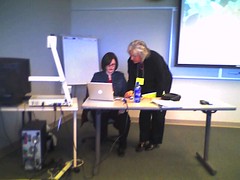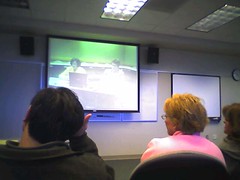Last week I wrote a blog entry entitled, The Cement is Drying. It utilized some admittedly heavy handed imagery to express a moment of frustration. Two very good friends of mine, David Jakes and Meg Ormiston, commented on the unfairness of my connection between Chicago and a Gangster culture. I apologize. It was inappropriate and, in 2006, inaccurate. I grew up with Jimmy Cagney, and movies and TV shows about Elliot Ness, and Al Capone.
I know that David Jakes is at least ten years younger than I am and Meg is probably younger than that. In fact, the term gangster has an entirely different connotation today than it had in the 1950s and earlier. So again, I apologize.
Yet, the imagery that I used remains one that I believe. That as time moves forward, and as our technologies, challenges, and cultures change, there are those who would, with the best intentions, enact policies that have the affect of sinking our children down to a world and a time that these policy makers are more comfortable with, and sink them away from any chance to take part in the wondrous possibilities that rapidly changing times afford us.
All of that said, I want to express my admiration of the school board members (with the exception of one) who attended the TLN Executive Briefing on Friday, and listened to myself, Ken Kay (Partnership for 21st Century Skills), Sheryl Abshire (Tech Director of Calcasieu Parish School System) and her superintendent and board member, and the amazing children from Gen Y, and continue to follow the vision of NSBA’s Ann Flynn. There was sincere and enthusiastic desire to prepare their children for the opportunities of a rapidly changing world.



